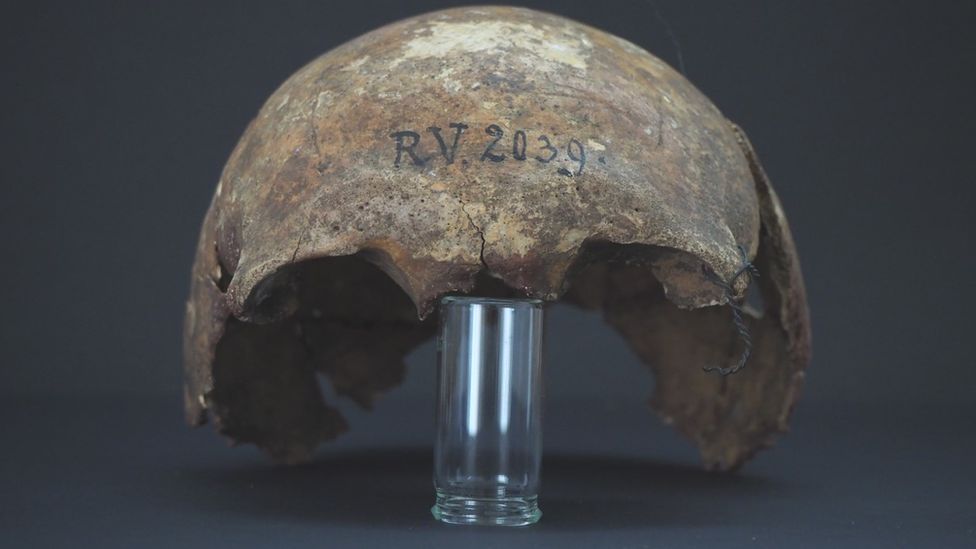
Scientists have identified a new contender for "patient zero" in the plague that caused the Black Death.
A man who died more than 5,000 years ago in Latvia was infected with the earliest-known strain of the disease, according to new evidence.
The plague swept through Europe in the 1300s, wiping out as much as half of the population.
Later waves continued to strike regularly over several centuries, causing millions of deaths.
"Up to now this is the oldest-identified plague victim we have," Dr Ben Krause-Kyora of the University of Kiel in Germany said of the 5,300-year-old remains.
The man was buried with three others at a Neolithic burial site in Latvia by the side of the River Salac, which flows into the Baltic Sea.
The researchers sequenced DNA from the bones and teeth of all four individuals, and tested them for bacteria and viruses.
They were surprised to find one hunter-gatherer - a man in his twenties - was infected with an ancient strain of plague, caused by the bacterium, Yersinia pestis.
"He most likely was bitten by a rodent, got the primary infection of Yersinia pestis and died a couple of days [later] - maybe a week later - from the septic shock," said Dr Krause-Kyora
The researchers suggest the ancient strain emerged about 7,000 years ago, when agriculture was starting to appear in central Europe.
They think the bacterium may have leaped sporadically from animals to humans without causing large outbreaks.
Over time, it became adapted to infecting humans, eventually evolving into the form known as bubonic plague, that is spread by fleas and raged through medieval Europe, causing millions of deaths.
The idea that early strains of plague were slow to spread challenges many theories about the development of human civilisation in Europe and Asia.
And it casts doubt on the hypothesis that the disease caused large population declines in Western Europe at the end of the Neolithic Age.
Other researchers have welcomed the study, but say it does not rule out the possibility that plague was spreading widely in Europe at this time.
Humans usually get plague after being bitten by a rodent flea that is carrying the plague bacterium or by handling an animal infected with plague.
The disease is still around today, but is treatable with antibiotics if caught early.
Words In This Article
Strain – n. (Biology) a genetic variant, usually in virus
Sweep through – v. to move, rush or pass quickly through some place
Wipe out – v.phrase to destroy something completely
Neolithic – adj. the characteristics of last phase of the Stone Age
Rodent – n. a mammal in rat family
Septic Shock – n. a serious medical condition in which the body cannot supply enough blood to its tissues and organs, caused by the damage to an organ by infection
Rage through - v.phrase to spread through some region or area with great intensity of destructive force
Comprehension Question
- Where was the skeleton discovered?
- How did they find out about the condition before his death?
- Why was this discovery significant?